

Geniverse – Concord Consortium. Importance Genetics concepts are notoriously hard to learn and teach.
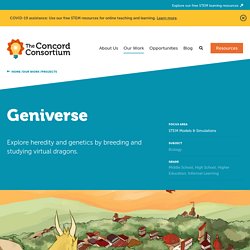
Traditional genetics experiments are difficult to do in schools. To demonstrate real-world genetics in action, teachers must have the time and space to maintain or grow stocks of model organisms (e.g., fruit flies or Fast Plants). Breeding experiments with these specimens can take weeks or more and may not result in usable data.
Human Senses collection- touch, taste, smell, sight and sound. Anatomy human body. Brain Introduction. The Heart. Home made models of organs and their functions. Introduction. Welcome to the Brain and Senses!
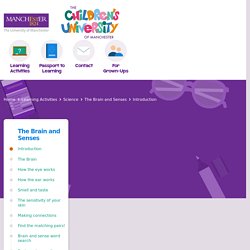
Hi, we are Dr Ellen Poliakoff and Dr Luke Jones and we’re experimental psychologists. This means that we find out how people think and how the brain works. When we are not teaching – or lecturing as it’s called at University! – we can be found doing experiments in the laboratory. Ellen is finding out about how we move and Luke is doing experiments about how we understand time. Luke’s research Do you find that time passes quickly when you are having fun, but crawls along slowly when you have to do something boring? We think that we have an internal clock in our brains that we use to answer questions like these: How long did the event last for?
How long will it be until something happens? How long ago did it happen? How well do we remember how long something lasted for? I’m particularly interested in finding out lots more about the latter. Kids' Medical Dictionary. Human Heart – Origami Organelles. A Human Body Interactive Science IB PYP Unit of Inquiry by Susan Powers.
Flippables, foldables, 3d models, science experiments, research, transdisciplinary learning…….all in the name of inquiry based science.
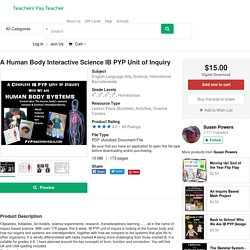
With over 170 pages, this 6 week, IB PYP unit of inquiry is looking at the human body and how our organs and systems are interdependent, together with how we compare to the systems that give life to other organisms. It is wholly differentiated with tasks marked A being more challenging than those marked B. It is suitable for grades 4-6. I have planned around the key concepts of form, function and connection. Impact of lifestyle choices. Niru Raghuram, homeroom teacher, EtonHouse International School, Singapore This article illustrates the impact of lifestyle choices on human body systems, health and survival through an inquiry into the transdisciplinary theme of “who we are”.
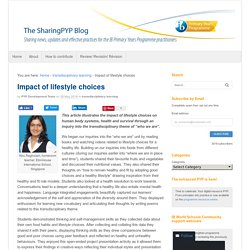
We began our inquiries into the “who we are” unit by reading books and watching videos related to lifestyle choices for a healthy life. Building on our inquiries into foods from different cultures (during our inquiries earlier into “where we are in place and time”), students shared their favourite fruits and vegetables and discussed their nutritional values. They also shared their thoughts on “how to remain healthy and fit by adopting good choices and a healthy lifestyle” drawing inspiration from their healthy and fit role models. Students also looked at a health resolution to work towards. Mystery Science: Lessons for elementary teachers. Saffron's Skeleton / Connected 2011 Level 2 – Structure / Connected / Instructional Series / English - ESOL - Literacy Online website - Instructional Series.
Why Do Our Muscles Get Tired? / Connected 2015 Level 2 – Have You Checked? / Connected / Instructional Series / English - ESOL - Literacy Online website - Instructional Series. Could a discarded shampoo bottle save thousands of babies lives? - BBC News. UC Connect public lecture on revolutionary 3D colour X-ray for medicine. Incredible Science Online. Episode 149: Blood. StudyJams! Science Activities. "Body Parts" - StoryBots Super Songs Episode 2. Learning Zone Class Clips - Muscles and movement - Science Video.
Human Evolution Timeline Interactive. What does the pancreas do? - Emma Bryce. So what does this internal health coach look like?
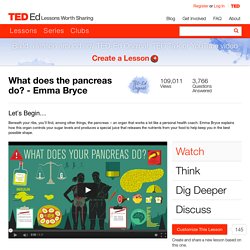
To find out, take a look at the organ and see where it lives in the body. Its prime position close to the stomach allows it to help us digest our food, with the aid of the enzymes—amylase, protease, and lipase—present in the special pancreatic juice it makes. Why is digestion important anyway, and how does the pancreas fit into this process? Read more here to find out. But digestion isn't the pancreas' only role. Diabetes may be a signal that our internal health coach isn't working quite as it should, but there are other disorders, like cancer, that pose a serious threat to this vital organ too. Human Body Interactive Science IB PYP Unit of Inquiry. Flippables, foldables, 3d models, experiments, research, trans-disciplinary…….all in the name of inquiry based science.

This 90 page,6 week, IB PYP unit of inquiry is looking at the human body and how our organs and systems are interdependent, together with how we compare to the systems that give life to other organisms. I designed this with upper elementary and middle school ages in mind. Since I work with the International Baccalaureate, I have planned around the key concepts of form, function and connection.
You will find MULTI-SENSORY LEARNING ACTIVITIES: Pre-assessment activities Inquiry task cards Optical illusions for brain work! Over a dozen interactive notebook activities Collaborative group work activities. Biology Worksheets, Lesson Plans & Study Material For Kids. This section contains information, facts, and worksheets on Biology.
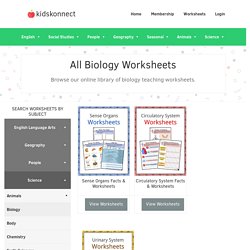
Read more... Biology is the wonderfully diverse study of all life on Earth. From ancient times through to modern, biologists have worked to examine the physical structure, chemical composition, function, development and evolution of organisms in order to better understand them. Through study and technological advancements, we’ve grown from embellished stories of animals from new lands – with many 17th- and 18th-century descriptions of creatures resulting in crazy interpretations – to identifying the components of individual plant and animal cells and even decoding the building blocks of life, DNA.
Under 11s. OUR BODY.